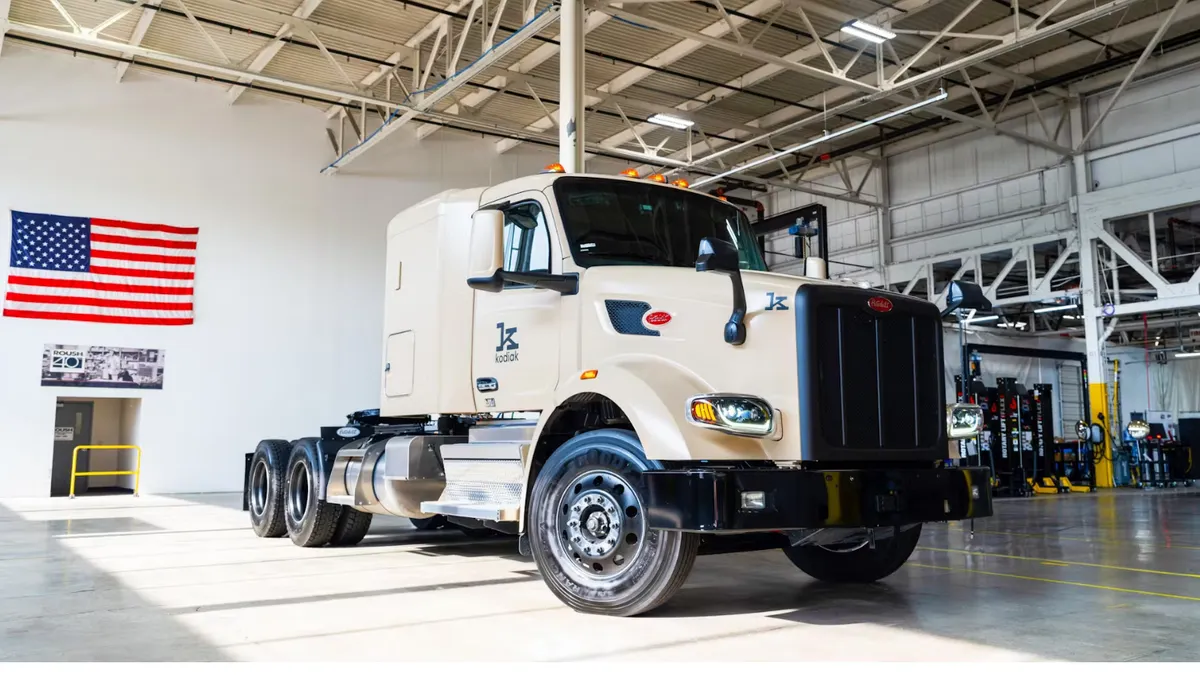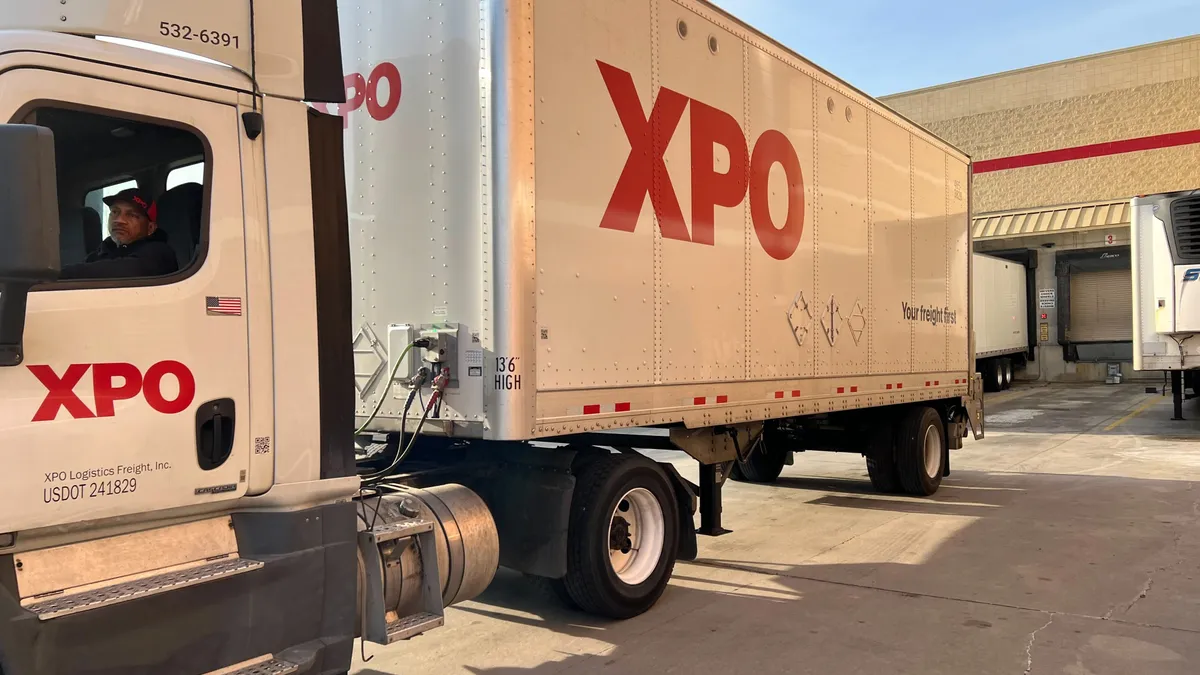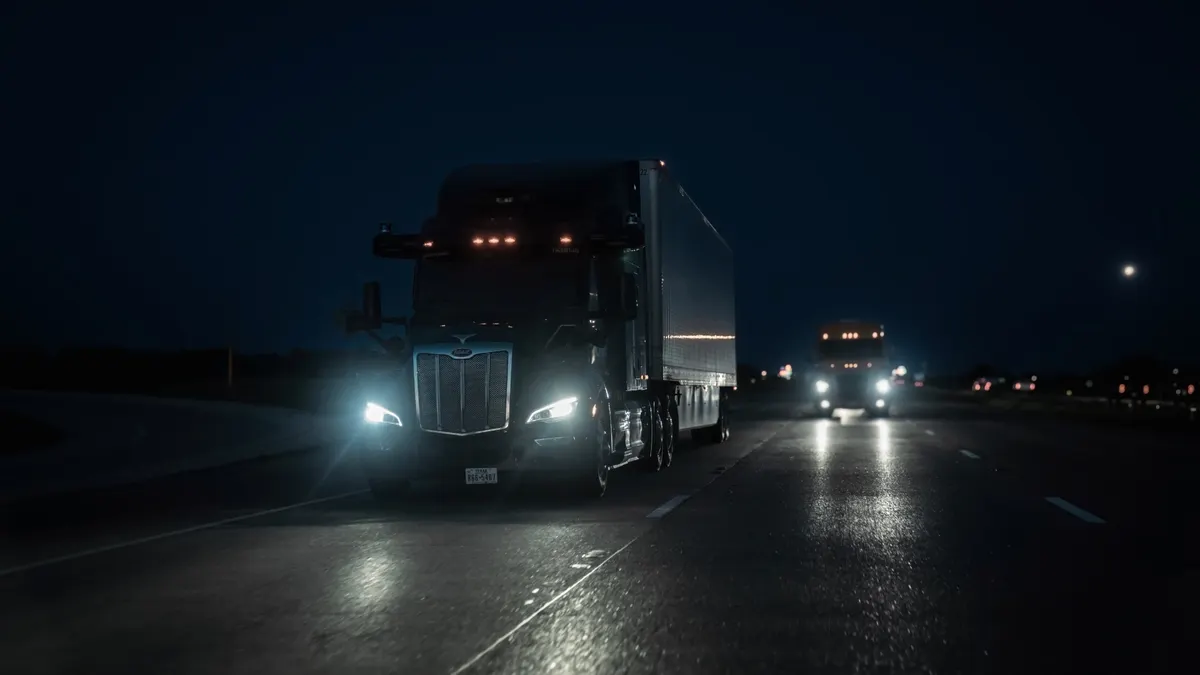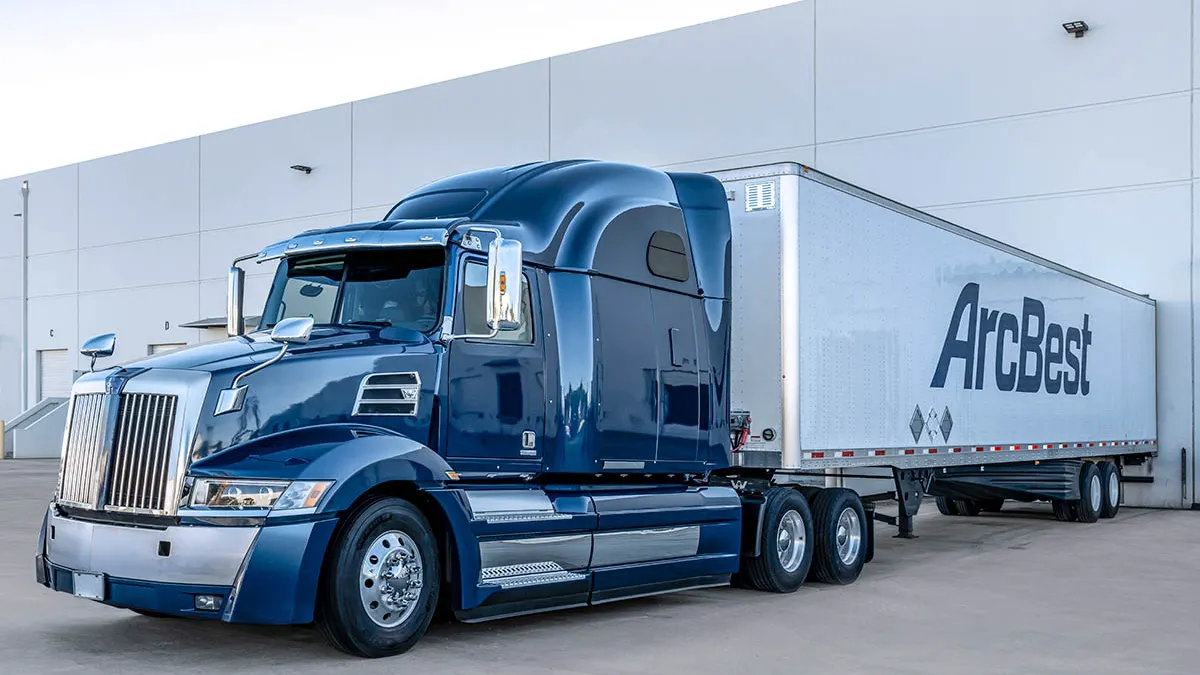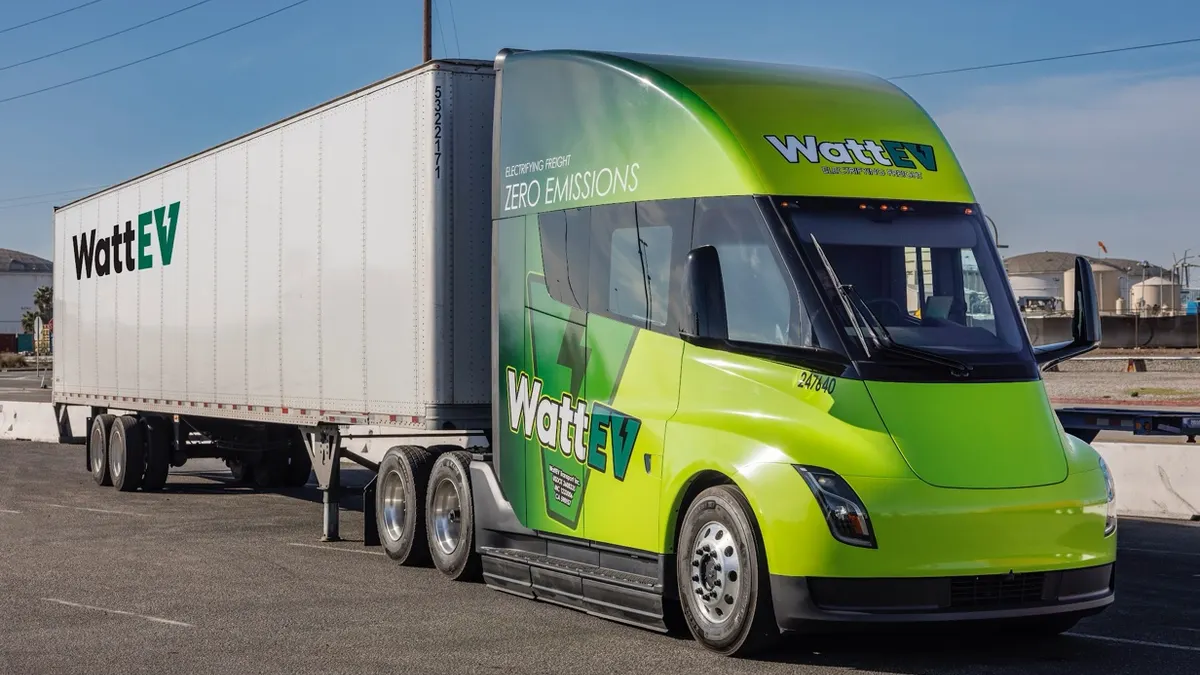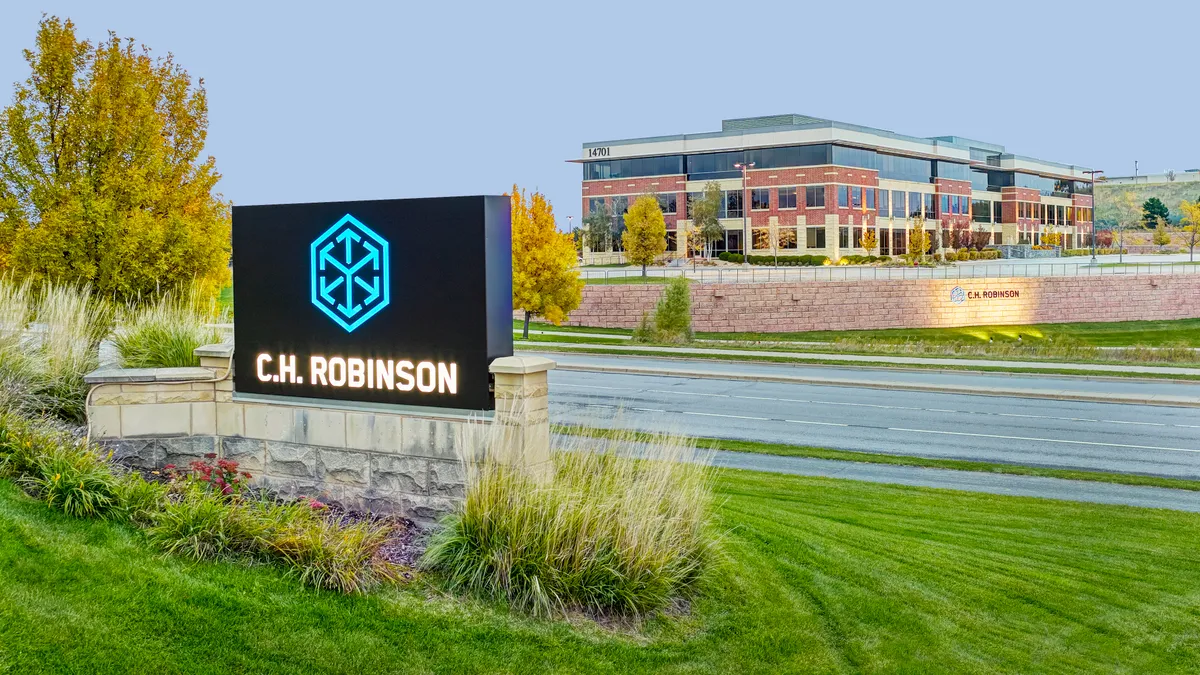To Greer Woodruff, J.B. Hunt's SVP of safety, security and driver personnel, footage collected by forward-facing cameras allows truck drivers to be like professional athletes: They can review film, see what occurred and how they responded, and refine their skills for a better response next time.
Eighty-four percent of J.B. Hunt's Class 8 fleet is equipped with forward-facing cameras that feature lane-departure warnings, Woodruff said during the FMCSA's Truck Safety Summit, held virtually Wednesday. "The drivers have responded well to the benefits of instant replay that these can provide," Woodruff said.
The carrier has deployed technology that provides in-cab audio and visual alerts, automatic emergency braking, adaptive cruise control, and other forward collision warning system features. Thanks to the technology, Woodruff said, J.B. Hunt has seen:
- A reduction in crash severity.
- Reduced liability expenses.
- Reduced equipment downtime.
- Increased driver retention.
"One of the requirements for us to deploy this type of technology is, we need a high level of driver acceptance," Woodruff said. Drivers now want and expect these safety features. "We've seen great driver acceptance."
But, when it comes to safety technology, driver acceptance isn't necessarily a given.
Overcoming skepticism with veteran driver testimonials
When YRC installed forward-facing cameras, drivers made it clear they did not want to be recorded, Steve Fields, a driver at YRC, told summit attendees. Drivers voiced concerns about safety cameras recording them after hours as they relax or sleep in the back.
Drivers, particularly veteran ones, also have concerns about automatic emergency braking, because it forces many to change their behaviors, Tom DiSalvi, VP of safety, driver training and compliance at Schneider, told attendees. Drivers might have to adjust decades-long habits, such as following distance and mirror scans — "but for the right reasons."
"One of the requirements for us to deploy this type of technology is, we need a high level of driver acceptance."

Greer Woodruff
SVP of Safety, Security and Driver Personnel at J.B. Hunt
Deputy Administrator of the National Highway Traffic Safety Administration Jim Owens also noted this challenge, offering summit attendees an anecdote.
A multi-million-mile driver was piloting a lane-departure system and repeatedly told maintenance it was working improperly, giving false alerts. So, the VP of maintenance took a ride with the driver, "and sure enough, it was beeping a fair amount," Owens said. But, the maintenance executive noticed the veteran driver had a tendency to hug the fog line, which triggered the alerts.
At first, many experienced drivers pass safety technology off as equipment for those who are inexperienced, thinking they don't need it. "You never know how many of those near misses that you've avoided," DiSalvi said. But veteran drivers are often the best at selling the rest of the driver on safety technology.
Werner VP of Safety and Compliance Jaime Maus told a story she heard from one of the carrier's multi-million-mile, accident-free drivers. At one point while on the road, the driver leaned down to reach a cup of coffee and would have rear-ended a car — if not for the truck's collision-mitigation technology.
"Those are the testimonials that help drive that driver acceptance within the fleet, and that's regardless of whatever technology we implement within Werner or even at other companies,” Maus said.
Schneider's drivers eventually moved past their concerns after seeing the benefits of the braking system. "We find it to be a very successful tool right now with strong fleet buy in," DiSalvi said.
And YRC's drivers changed their tunes about the cameras, once they understood the cameras would not film the inside of the cab.
"You never know how many of those near misses that you've avoided."

Tom DiSalvi
VP of Safety, Driver Training and Compliance at Schneider
"At first we had a little bit of pushback. It's hard to sit down with a driver that's got 3 million miles under his belt ... and tell him how to do his job. We don't do that. We help them," Fields said. Now, drivers are reporting incidents before the footage is reviewed, allowing them to talk through what happened. "It's kind of made a switch from serious pushback, and then drivers not wanting to participate, to drivers actually coming back and saying, 'Hey, I did this wrong.'"
Acceptance also comes when drivers realize technology is not necessarily there to catch their wrongdoings. It can also prove their innocence.
"[Drivers] understand now that, that camera has more of a chance of exonerating them than it does getting them in trouble," Fields said. "They're excited as a company, because, 'It's not going to cost my company millions of dollars for something that wasn't our fault.'"
Trusting the technology
Safety technology has come a long way in recent decades. Woodruff said J.B. Hunt tested systems in the late 1990s that it never ended up deploying. Drivers who have had experiences with that older tech may not be keen on trying out equipment today.
"Maybe a barrier to greater adoption is some people may have a bad taste in their mouth from earlier versions," Woodruff said.
Richard Beyer, VP of engineering and research and development for Bendix Commercial Vehicle Systems, told summit attendees the company's design philosophy keeps those previous driver experiences in mind. Drivers who have encountered false alerts in the past might understandably view false emergency interventions, such as braking in the middle of a highway, as a concern.
"A driver with these safety systems has to build trust in it."
Richard Beyer
VP of Engineering and Research and Development for Bendix Commercial Vehicle Systems
"A driver with these safety systems has to build trust in it. They have to know when it's going to work, when it's not supposed to work, and trust and be able to have confidence," Beyer said. That trust can be developed as product design advances to counter those risks.
Newer systems, such as fusion products, use camera and radar technology to limit the number of false interventions and detections. And products and technology will only keep improving and evolving, Beyer said.
"If we deal with our drivers heavy handedly with that type of technology that we want them to embrace, then they're not going to accept that. And so we have really a partnership with the drivers," Woodruff said. Technology vendors have sought J.B. Hunt drivers' input into new technologies before putting them into the marketplace, and the carrier makes sure to consider how drivers might react to technology, Woodruff said.
Safety starts with 'the guy behind the wheel'
"The No. 1 safety feature in that truck is the guy behind the wheel," Fields said. "We're investing in crash mitigation, adaptive cruise control, lane departure, our Lytx cameras. But my company is investing in our drivers, as well."
It starts with training. For Knight-Swift, that means empowering drivers to take safety into their hands by providing the right resources and materials, according to Brett Sant, the carrier's SVP of safety and risk management.
"When we talk about training, what I think we're focusing on primarily is competency," Sant said. "We really want a truck driver in every seat who is conscientious, who's competent and who's capable." Sant said he thinks the carrier trains more drivers than any other in the country, and Knight-Swift spends time and energy on individualized, ongoing training.
Ingrid Brown, owner-operator of Rollin' B, said training encompasses more than just what's taught at schools and in offices. Drivers learn on the road and from seasoned drivers. "It comes from people like me, that have been out here for 40 years, that passes on what was given to me. But the only way to do that is, we've got to start ... listening to drivers," Brown said.
"We really want a truck driver in every seat who is conscientious, who's competent and who's capable."

Brett Sant
SVP of Safety and Risk Management at Knight-Swift
J&M Truck Group encourages drivers to call in, typically to a driver manager or dispatcher, when they're in an uncomfortable or abnormal situation. Dave Edmondson, the carrier's VP of safety and compliance, told summit attendees he would rather talk through a safety situation at 2 a.m. than receive a call with bad news at 2:15 a.m.
"And they're welcome to do that at any time, day or night," Edmondson said. "I think that is something that really helps, just simply empowering the driver to have that ability."
The open communication goes both ways, Edmondson said. Drivers with a long tenure with J&M Truck Group serve as role models, and Edmondson will give them a call if he has questions. He recommended all fleets identify those people, though "they tend to identify themselves."
"[Safety] really does start with a commitment, at the very top of your organization, and all the way through the organization," Sant said. "Everybody needs to be aligned with the same values and the same objectives, and that commitment needs to be real and sincere, because if it isn't, people learn that really quickly."






